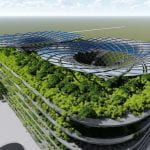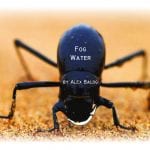I Homework review
Matching Data structures
Mode Lab Grasshopper Primer. F 3.5 & 3.6
http://modelab.is/grasshopper-primer/
David Rutten’s Grasshopper3d Data Tree Masterclass
II. Inspiration Presentation : Zandra on Doris Sung Kim’s Breathing Wall and Living Architecture.
III. Discuss: How can ideas about genetics and evolution contribute to design thinking?
A. Evolution of Eyes video by National Geographic
http://video.nationalgeographic.com/video/magazine/160115-ngm-evolution-of-eyes?source=searchvideo
Inside the Eye: Nature’s Most Exquisite Creation, by Ed Yong and David Liittschwager National Geographic Magazine
telescopes
Richard Dawkins’ Climbing Mountains Improbable
B. Switch Genes: What Darwin Never Knew
Galapagos finch beaks
Stickleback Abdominal fin
Embryonic timing of stripe generation Zebra
C. Programming Architecture
hit Blog for video on Coding Evolution (genetic algorithms)
Milos Dimcic has created Rhino GH tools for working with rain, structurally optimized voronoi patterns and sun shadows. Site includes visually impressive projects and animations about the software. Dimcic worked for Knippers Helbig and then completed his Ph.D. with Jan Knippers in Stuttgart and Kai-Uwe Bletzinger at Munich.
D. Metaball Explanation by David Rutten, GH author
For the Ambitious: Manuel De Landa on Genetic Algorithms and Architecture
Poetic lecture presenting a concise contemporary approach to design. Explains an approach of using genetic algorithms “to tease out the morphogenetic (formal) potential from materials”, the beauty of variety so that a specific instance can be fitted to circumstances. A world of flows and a network of local conditions rather than fixed euclidean frameworks.
—
HOMEWORK
A. ** DOWNLOAD and Install Kangaroo Physics 2.02 and 0.099 from http://FOOD4rhino.com You must uninstall any old versions to make it work.
B. Work on Analytic Case Study for Final Project:
- Clearly define a problem in a specific location.
- Find an organism that thrives in that location.
- Identify how the organism thrives: Draw key aspects of the internal organization, membrane, external sensors and reactions to environmental stimuli, etc.
- DIAGRAM key principles : abstract the underlying ideas.
C. Read Turner’s Bones, Vogel’s Cat’s Paws and Catapults (Ch.3-5) from the Course Disk : easy and fun.
—
Addison : swarm intelligence
Langdon : leaf veins / dragonfly veins as a building membrane
Zandra, Max, Connor (frog skin, snow aggregation, breathable surface)
Isabel and Iryna: Responsive solar shading






Zandra’s presentation made me think of a book by Rachel Armstrong: Living Architecture: How Synthetic Biology Can Remake Our Cities and Reshape Our Lives. It is very theoretical at this point, but conceptually interesting. Armstrong also has a related TED talk: http://www.ted.com/speakers/rachel_armstrong